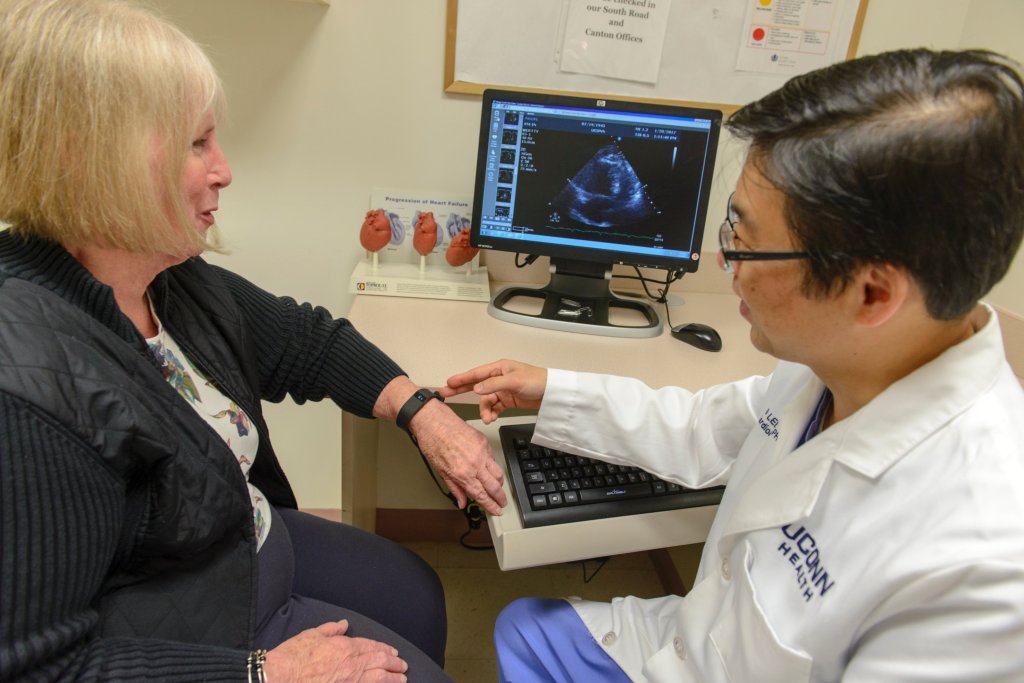
Quick feedback from a Connecticut woman’s Fitbit confirmed her suspicions that her shortness of breath and rapid heartbeat were cause for alarm.
Patricia Lauder, a 73-year-old retiree from Harwinton, knew that something was seriously wrong in mid-January after her wearable fitness tracker displayed a resting heart rate of 140 beats per minute.
She had been battling a sinus infection and suspected a case of walking pneumonia. After several doctor visits, Lauder was awaiting the results of diagnostic tests to determine the cause of her symptoms.
“Finally, my resting heart rate got to the point where a simple chore was a big effort,” she said.
Over the next few days, Lauder noticed that her resting heart rate was steadily rising from her normal 60 to 70 beats per minute to over 100. Because of the data her Fitbit had saved, Lauder knew that this was abnormally high for her.
“I just couldn’t wait anymore. Something else had to be done, which is why I called the ambulance — which turned out to be a good thing,” Lauder said.
She dialed 911 and was taken to the emergency department at UConn John Dempsey Hospital in Farmington. During the ride, first responders confirmed what the device on her wrist had been telling her. They measured her heart rate above 140 beats per minute while she was lying down.
“When I got to the hospital, they did a series of tests and found that I had blood clots in both lungs,” Lauder said.
A blood clot occurs when platelets and insoluble proteins combine to form a gel-like mass that can stop bleeding. Typically, they form near cuts or injuries, but in an artery or vein, a clot can decrease blood flow.
Lauder’s doctors aren’t sure whether her clots were linked to her respiratory infection, but researchers say people with respiratory infections may have a temporary increased risk of developing clots.
In Lauder’s case, the blockage in both lungs caused her heart to work significantly harder to continue circulating blood. “My heart had enlarged to about 65% beyond its (normal) capacity,” Lauder said.
“Because of the clot, initially, the pressure in her right ventricle was very dilated and not functioning well,” said Dr. JuYong Lee, director of vascular and endovascular medicine at UConn Health Calhoun Cardiology Center.
After taking a look at Lauder’s CT scan results, Lee decided to quickly intervene and apply clot-busting drugs directly into the lungs’ blood clots through a catheter. Within 24 hours, Lauder’s clots were gone, and her lung and heart function returned to normal.
“I had the procedure on Friday, removed the catheter on Saturday and was home Monday evening,” she said.
“I think the Fitbit actually helped her decide whether or not this was a serious condition at that time,” Lee said. He noted that several of his patients wear fitness trackers, but in this situation, it could have been life-saving.
“This condition is very critical,” he said, “and she may have actually died if she had not sought medical attention.”

